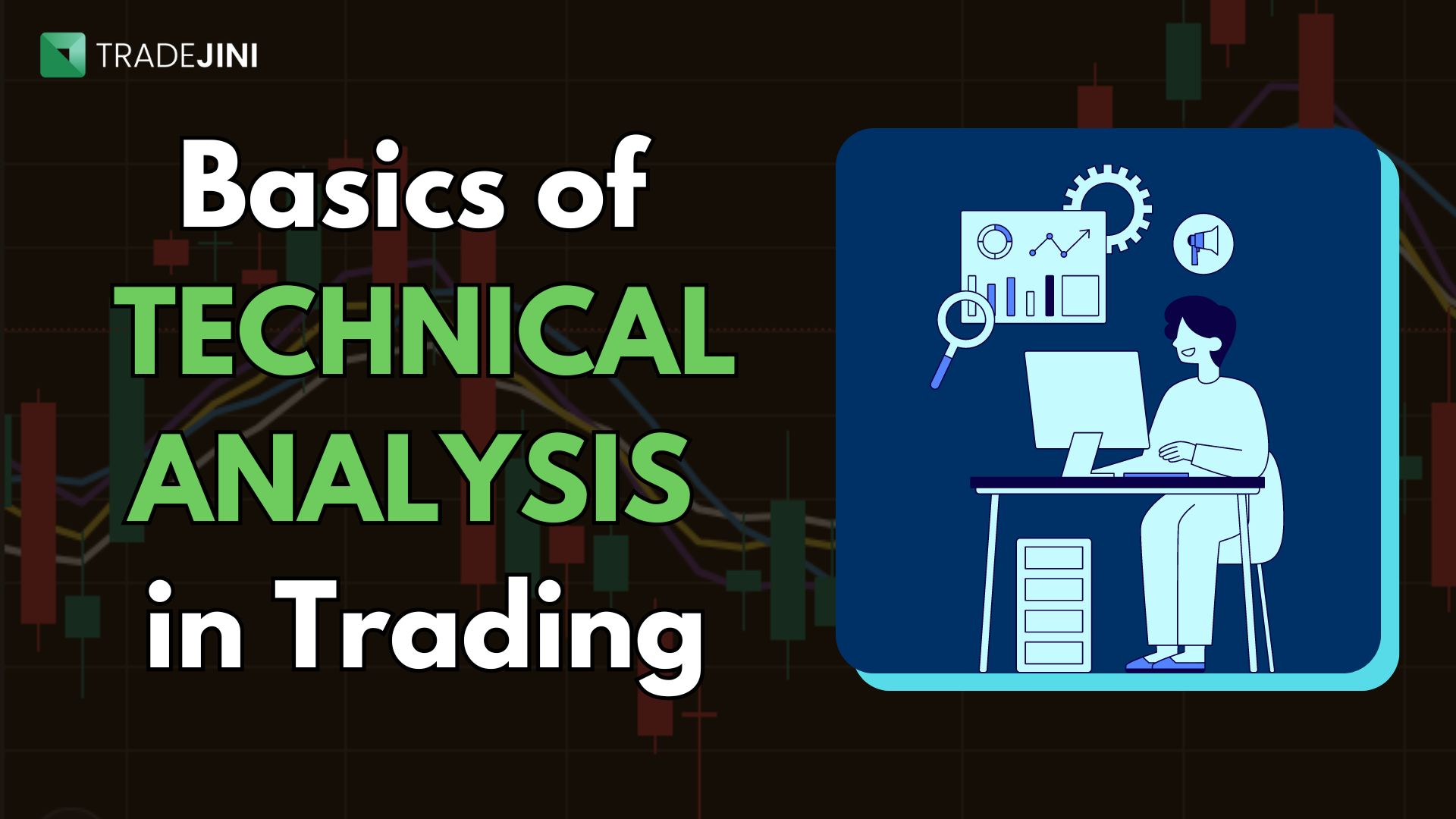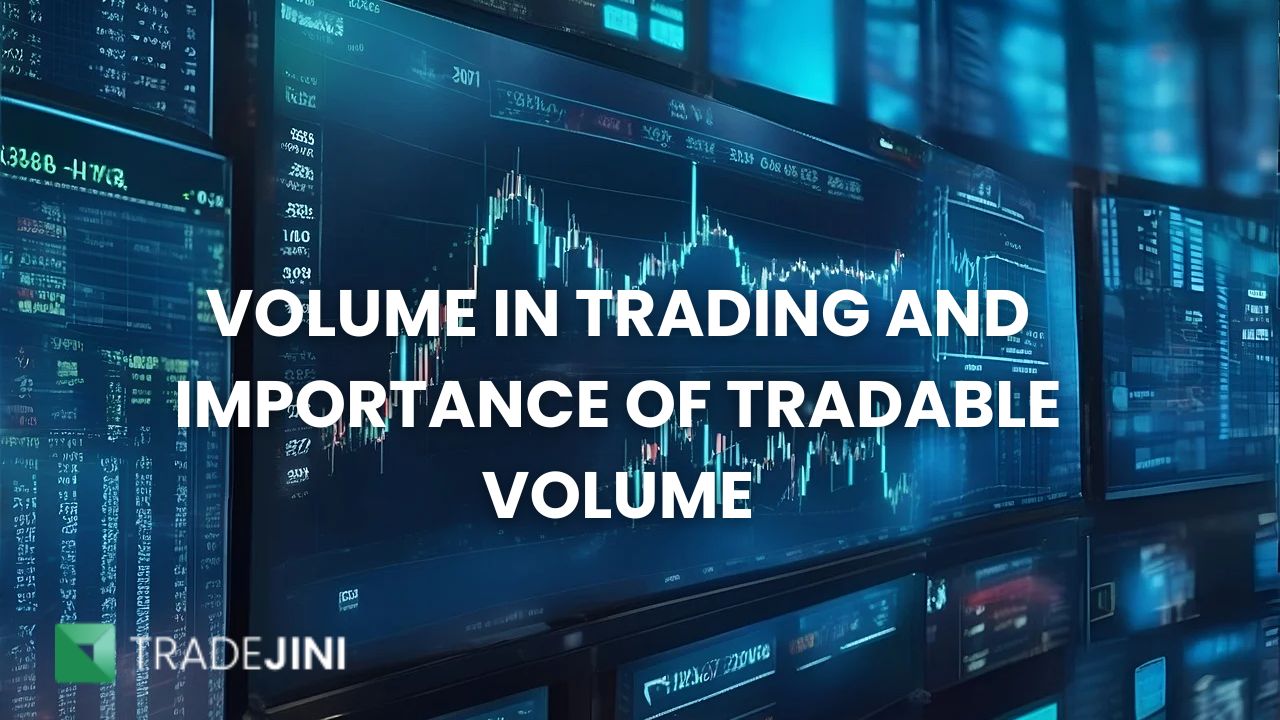Trading is an active investment strategy that involves frequent buying and selling of stocks or other assets to capitalise on short-term price movements. In this blog, we will cover all the fundamentals of technical analysis and how to apply them effectively to your trading strategy.
Technical analysis in trading
Technical analysis means studying how the market moves and the prices change. It involves looking at charts and using tools to analyse where the market might be headed. You can use technical analysis for any type of investment, like stocks, bonds, commodities, or currencies.
Traders use different technical indicators like the Relative Strength Index (RSI), moving averages, and Bollinger Bands to understand price changes better. These indicators give important clues on when to buy or sell.
However, traders choose different indicators based on how they like to trade. However, the aim is always to spot patterns and trends that can lead to successful trades.
Difference between technical and fundamental analysis
The main difference between technical and fundamental analysis lies in the data traders focus on. Fundamental analysis uses a company's financial data and industry trends to evaluate its true worth. On the other hand, technical analysis focuses only on price and volume data without considering a company's financials or industry trends.
Key technical indicators in trading
Understanding the key technical indicators is important to identify the best trading opportunities and manage risks. Some of the most critical technical indicators for traders include:
Moving Averages
Moving Averages are one of the easiest and most commonly used technical indicators. They are used to determine the trend direction and potential entry and exit points. The most widely used are the 50-day and 200-day moving averages. When the price is above the moving average, it suggests an uptrend, and when it's below, it signals a downtrend. There are two main types of Moving Averages: Exponential Moving Averages (EMA) and Simple Moving Averages (SMA).
Bollinger Bands
Bollinger Bands are a technical indicator that uses two bands to define the price movement on a chart. The upper band indicates overbought conditions, while the lower band represents oversold conditions. Bollinger Bands can be used to spot potential trading opportunities and to confirm trends.
Relative Strength Index (RSI)
The Relative Strength Index (RSI) is a momentum oscillator that evaluates the strength of a security's price action. By using RSI, traders can determine whether an asset is overbought or oversold and identify potential trading opportunities. RSI values range from 0 to 100; values above 70 indicate overbought conditions, while values below 30 indicate oversold conditions.
Stochastic Oscillator
A stochastic oscillator is a momentum oscillator that compares a security's closing price to its price range over a set period. The stochastic oscillator is used to detect overbought and oversold conditions, as well as to confirm trends.
MACD (Moving Average Convergence Divergence)
The MACD (Moving Average Convergence Divergence) is a momentum oscillator that determines the difference between two exponential moving averages (EMAs). The MACD is also used to identify potential trading opportunities and confirm trends.
Chart patterns for traders
Chart patterns are an important part of technical analysis and can provide valuable insights into market trends. Here are a few chart patterns that can be very useful for traders:
- Candlestick patterns: These patterns can give you an idea of how the market is feeling and help you identify potential trend reversals. For example, a bullish engulfing pattern could indicate a potential reversal from a downtrend to an uptrend.
- Trend lines: Trend lines are a simple yet effective tool to identify trends. Traders can use them to identify support and resistance levels and make informed trading decisions.
- Head and Shoulders: A head and shoulders pattern is a bearish reversal pattern that can indicate the end of an uptrend. This pattern has three peaks, with the middle peak being the highest. A break below the neckline can suggest a potential trend reversal.
- Double and triple bottoms/tops: These reversal patterns can indicate the end of a trend. A double bottom has two lows and a high in the middle, but a triple bottom has three lows with peaks in between. A break above the peak can indicate a possible trend reversal.
Understanding these chart patterns and implementing them into your trading strategy helps you make better trading decisions and increase your chances of success.
Learn more about Average Directional Index (ADX) Indicator and How To Use It For Day Trading on our blog.
Combining technical indicators and chart patterns
Combining technical indicators with chart patterns can be a smart move for traders. Technical indicators like moving averages, the relative strength index (RSI), and Bollinger bands, when used alongside chart patterns like support and resistance, give traders a clearer picture of market trends and potential trading opportunities.
One effective approach is to use multiple indicators together to confirm signals. For instance, if the RSI shows the market is oversold and Moving Average Convergence Divergence (MACD) indicates a bullish crossover, it could mean a likely price turnaround. But remember, it's not wise to rely too much on just one indicator or signal. This could lead to false signals and bad trading choices.
Identifying support and resistance levels is another important part of technical analysis. These levels show where there's strong buying or selling pressure and help us determine when to get in or out of trades.
To prevent being tricked by false signals, it is crucial to trade with caution and patience. Avoid taking advantage of every opportunity that presents itself, and always use stop-loss orders to limit your potential loss. By using technical indicators and chart patterns wisely, traders can improve their odds of doing well in the market.
Advantages and disadvantages of technical analysis
As a trader, it's important to understand the advantages and disadvantages of technical analysis. Here are some of the pros and cons:
Advantages
- Easy to Learn: Technical analysis is quite simple to learn, especially with so many online resources available. With some practice, traders can easily interpret charts and identify trends.
- Objective Approach: Technical analysis gives you an objective approach to trading. It relies on data and market movements instead of emotions or opinions, which can cloud judgment.
- Historical Patterns: Technical analysis evaluates historical patterns to predict future price movements. By analysing past trends, traders can identify potential future opportunities.
Disadvantages
- Limited Information: Technical analysis is based only on market data and doesn't take into account external factors like news or economic events that can affect the market.
- Subjective Interpretations: Different traders may interpret the same chart differently, making technical analysis subjective.
- False Signals: Technical analysis can also generate false signals, which can lead traders to enter or exit trades at the wrong time.
How to deal with the limitations of technical analysis
- Use Fundamental Analysis: Combining fundamental analysis with technical analysis can provide a more comprehensive picture of the market.
- Use Multiple Indicators: By using multiple indicators, traders can confirm trends and lower the risk of false signals.
- Stay Informed: Staying updated on news and economic events can help traders anticipate market movements that technical indicators may not reflect.
Learn More About: How to select stocks for intraday trading with this advice for beginners. Discover the fundamental techniques, approaches, and standards for making wise trading choices.
Technical analysis is a great tool for traders, but it has its limitations. By understanding the advantages and disadvantages and combining multiple strategies, traders can make more informed trading decisions.



